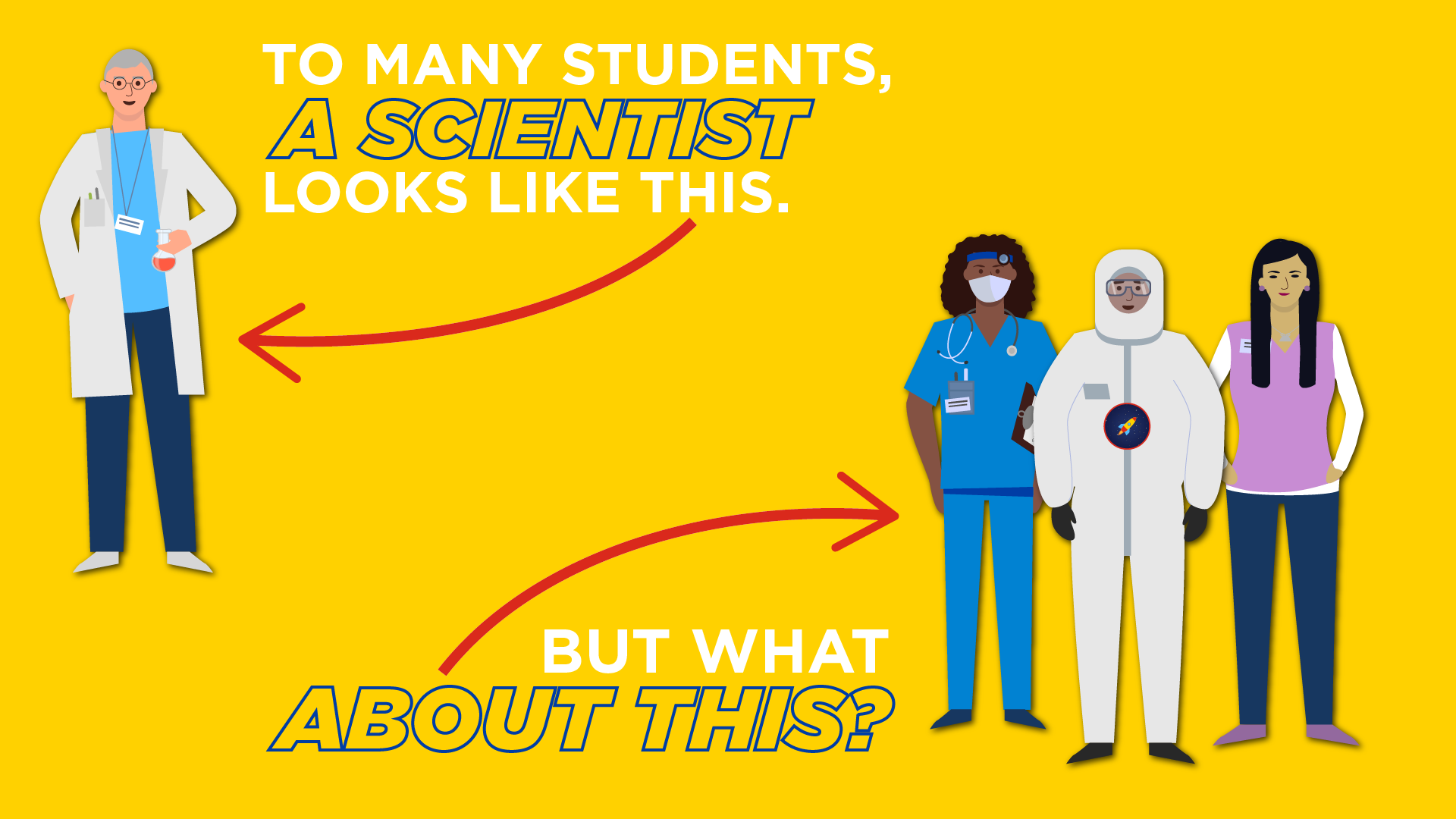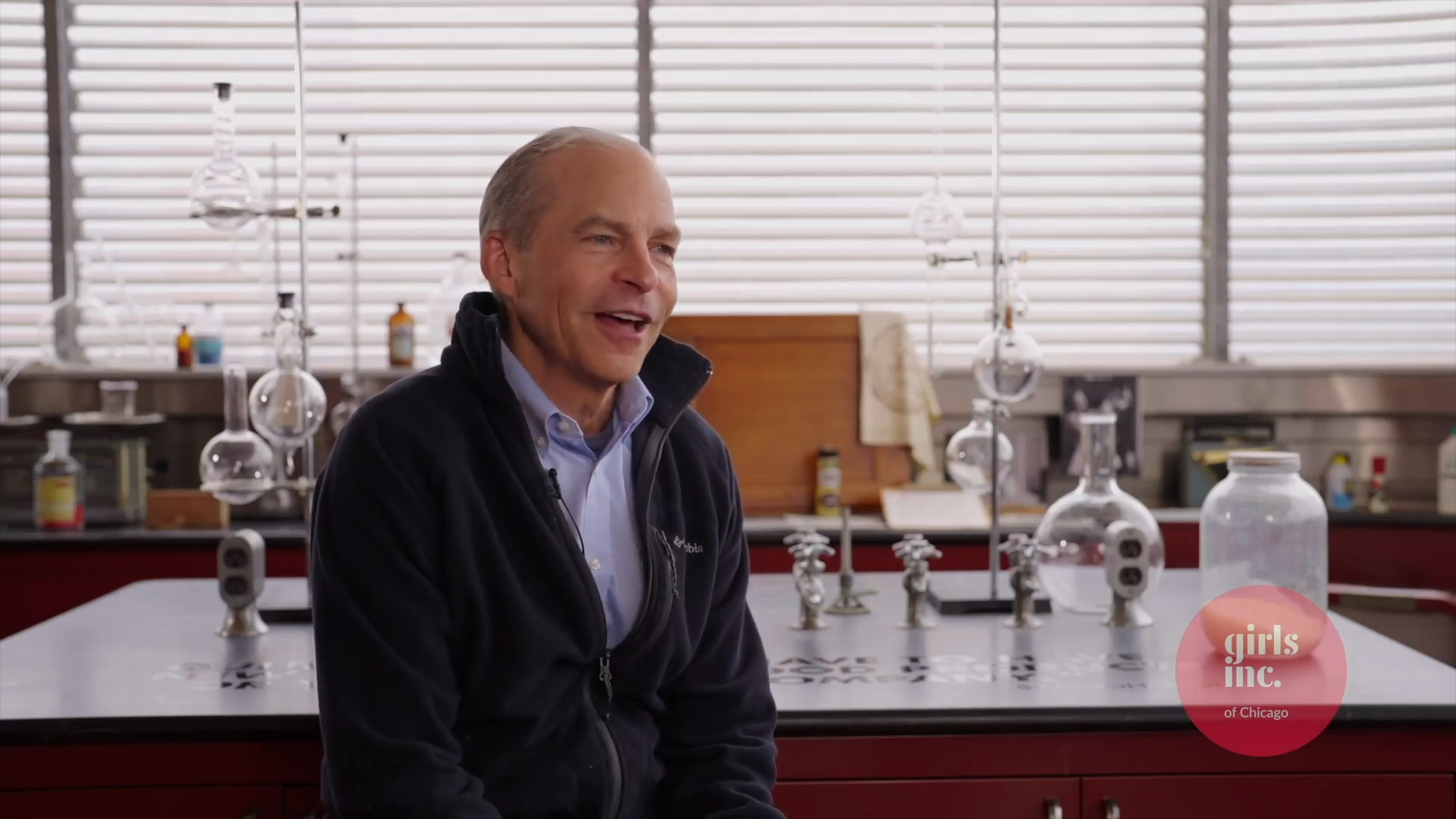Closing the Gap Partnering to Address Barriers Between Girls and STEM Education
What does a scientist look like?
The short answer is easy: a scientist can look like anyone because a scientist can be anyone.
But the longer answer can be more complicated: it depends on who you ask.

Many girls, and in particular, girls of color, don’t see scientists who look like them and face negative stereotypes regarding who should be a scientist. These barriers feed into fewer girls pursuing STEM education, and later, STEM-related career opportunities.
According to the “Why So Few?” STEM Report from the American Association for University Women, “negative stereotypes about girls’ abilities in math can indeed measurably lower girls’ test performance.” This negative reinforcement can result in what is known as the “confidence gap”, or, the gap between how girls and boys assess their abilities, regardless of actual abilities, grades or test performance.
In particular, two negative stereotypes persist, which children as early as elementary/primary school ages are aware of, and can express:
- girls are not as good as boys in math
- scientific work is better suited to boys and men
These negative stereotypes, coupled with a lack of representation in STEM fields, can have devastating effects for girls and students of color, whose interest in STEM plummets as they age.
- 74% of middle school girls (typically aged between 11-13) express an interest in STEM careers 1
- But 9% of girls from ages 13-17 are interested in STEM careers 2
- And just 34% of the workers in STEM roles are women3
STEM: A Passion Embedded in SC Johnson’s Legacy and Community Support
To say SC Johnson has passion for STEM running through its veins is an understatement.
Chairman and CEO, Fisk Johnson, holds multiple degrees in STEM fields, including a Ph. D in Applied Physics. His mother, the late Gene Johnson, had a successful career as an engineering mathematician at Ryan Aeronautical in San Diego, California. An early computer programmer, she worked on the first vertical take-off aircraft, in an era when computers were barely known in the business world. Over the years, she was a champion for STEM learning, with a particular focus on nature.
H Fisk Johnson - Girls Inc. of Chicago's first-ever “Male Ally of the Year”

As Fisk said above, “as a male who grew up surrounded by opportunity, it is impossible for me to understand the barriers young women face to realize their full potential in life. But certainly, I saw it in the discipline I pursued, because there are very, very few women in physics when that absolutely shouldn’t be the case.
There is a world of talent in young women and, just as my mom did for me, I love the idea of doing what I can to help young women develop a passion for something that can be incredibly important for themselves and the world.”
For Fisk, supporting young women in STEM is “simply the right thing to do.”
Helping educators with relatable, engaging, hands-on curriculum and projects is an important way to encourage and grow girls’ interest in STEM, according to research by Microsoft. SC Johnson has developed partnerships around the globe to foster STEM programs and encourage more young women in STEM. Here are a few of partners and programs SC Johnson supports:
North America
- SC Johnson’s Kaleidoscope Education Series (KES), now in its 45th year, provides grade-specific, hands-on STEM programs to schools at no cost. Recent programs include hands-on demonstrations and learning about the aspects of modern physics, as well as heat, energy, electricity, magnetism and plasma, and a presentation on the dynamics of the paper airplane.
- In 2021, SC Johnson donated $5.5 million USD to Gateway Technical College in our hometown in Wisconsin, to create the SC Johnson STEM Scholars Pathway. This program provides women and people of color, who have historically been underrepresented in STEM industries, and those with limited means the opportunity to gain a four-year degree in STEM-related career fields.
- Since 2013, we’ve sponsored the Southeastern Wisconsin Girls Engineering, Math and Science (GEMS) Conference, to help engage middle school aged female students with hands-on experiences and learning sessions. These sessions are designed to encourage the girls to pursue STEM courses and careers, and ultimately inspire young girls to reach their potential.
- Scientists in School, a Canadian organization whose objective is to inspire elementary students and teachers to enjoy science and technology, has been engaging elementary-aged children in real-world experiences that spark curiosity and nurture their inquisitive instincts, while helping them discover that STEM is both fascinating and fun. SC Johnson supports their STEM learning programs for more than 4,800 children and youth across Brant Country, the City of Brantford, Six Nations of the Grand River, and Mississaugas of the Credit First Nation in Canada.
- SC Johnson helped fund the expansion of Girls Inc. of Southeast Wisconsin programming to over 300 middle school girls annually. Their SMART STEM program provides after-school STEM multi-disciplinary experiences, including tutoring and exposure to off-site STEM experiences at local companies to provide girls with the opportunity to explore and entertain careers in STEM fields.
Asia-Pacific
- In China, we work with the Shanghai Soong Ching Ling Foundation, a leading education provider in China, educating 30,000 primary and middle school students in 100 schools yearly on STEM subjects, including developing carbon-reduction/carbon-neutral solutions for their community.
- Our partnership with the Japan Environmental Education Forum (JEEF) trains educators in STEM programs to educate over 700 individuals from five schools across Yokohama on the impact plastic waste has on the ocean and how recycling and sustainable lifestyle choices can help to mitigate it.
- At Teach for Malaysia, we support their flagship Fellowship program to recruit, train and develop leadership in teachers who can deliver quality STEM education to underserved students in Perak (Kuala Kangsar and Hilir Perak) and Sarawak (Padawan and Serian).
Europe and the United Kingdom
- In the United Kingdon (UK), we work with Smallpiece Trust to enable the delivery of 3 STEM Days at local schools, where up to 60 students take part in a fun, inspirational, practical one-day challenge to inspire them to take up careers in STEM.
- The NEAnderLab (Germany) is a laboratory that provides local students ages 10-18 with insights into numerous scientific fields and inspires them to take up STEM subjects. We support their online courses, NEAnderLab on Tour, school visits, Science Girl Day and their summer academy, helping to nurture STEM talent in young people.
Latin America
- We continue to support ESCOLA JOHNSON, an important part of our legacy in the Fortaleza, Brazil community. Our recent grants support STEM education at the school, seeking to improve test scores, increase graduation rates and prepare high school students for career paths beyond graduation.
Today’s learners are tomorrow’s leaders, and leveraging partnerships and innovative programming helps break down barriers so that a young girl today can see herself as a scientist tomorrow.
How You can Help Support a Girl in STEM
The Microsoft research also found that parents and families can support girls in STEM, and noted that when parents encouraged their girls, they were twice as likely to stay in STEM.
Girls Inc., the parent organization of our partner Girls Inc. of Southeast Wisconsin, has a list of things people can do to encourage a girl in their life to think about STEM education and career opportunities.
Check out some of their suggestions below, or download the full guide here.
- Assume she is interested in STEM education & ask her about her classes and teachers
- Ask her about how she views scientists and what she sees as “science.” Help her understand that STEM is everywhere and STEM professionals can work in a wide variety of fields
- Visit a museum, business, or factory together to see real-world uses for math and science (we know a great exhibit if you’re in the Chicago, USA area!)
- Encourage persistence - making mistakes is a vital part of STEM, and making mistakes does not mean that someone is not “good at science”
- Introduce her to a variety of role models – especially women – so that she does not limit her dreams
1 https://ngcproject.org/resources/encouraging-girls-k-12-study-stem
2https://jausa.ja.org/news/press-releases/survey-teen-girls-interest-in-stem-careers declines#:~:text=A%20new%20survey%20by%20Junior,a%20similar%20survey%20in%202018.
3 https://www.aauw.org/resources/research/the-stem-gap/